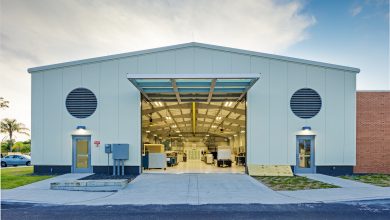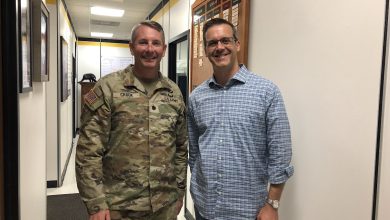Discovering the Higgs Boson
Florida Tech Researchers Help Unlock One of Science’s Great Mysteries
Last summer, the discovery of a new subatomic particle captivated the collective psyche—and not just that of the science community. This mystery particle fit the criteria for the long-sought Higgs boson, the “God particle” that would tie a bow on the Standard Model of particle physics, validating our theories about the interaction of elementary particles and furthering our understanding of the world around us. But why did this particular particle—invisible to the eye and operating within a complex theoretical framework—inspire such broad curiosity? Was it the length of the search? Its grandiose moniker? Its key to the origin of mass?
For such an infinitesimally small particle, the role of the Higgs boson is expansive. Simply put, it gives mass to other elementary particles allowing them to combine. Quarks combine into protons and neutrons, which combine with electrons to form atoms, which combine together into molecules and so on.
“Without the Higgs boson, we would not exist,” says Marc Baarmand, professor and head of the Florida Tech High Energy Physics team.
On a subatomic level, everything begins with quarks, leptons and force particles. But without mass, without a mechanism to bind them together, they would float around freely and independently.
The Higgs mechanism, proposed by Peter Higgs and others in the 1960s, bridged this gap in the Standard Model.
“As particles move through space, they travel through the Higgs field,” explains Baarmand. “If they interact with the Higgs field, they acquire mass. The larger the interaction, the more massive the particle.”
For example, think of a skier and a hiker moving through the snow. As more snow accumulates on the hiker’s snowshoes, he experiences more resistance,
more mass.
While the Standard Model of particle physics has been tested to excellent precision, says Baarmand, no physical evidence had confirmed the existence of the Higgs mechanism.
Until now, perhaps.
The global effort to unlock this mystery involves thousands of scientists working at the European Center for Nuclear Research (CERN) in Switzerland, home to the world’s largest and most powerful particle accelerator, the Large Hadron Collider (LHC). Since 2001, Florida Tech has been a member of the Compact Muon Solenoid (CMS) project, a $550 million detector along the LHC ring that collects data from the experiment’s proton-proton collisions.
To look for evidence of the Higgs boson, protons must collide at super high energies breaking them down into their fundamental building blocks—allowing scientists to measure phenomena not otherwise observable. The resulting particles decay almost instantly, but the CMS detector captures the data.
“The detectors look at these collisions and reconstruct what happened,” says Baarmand. “If there is a new particle produced, what are its properties—its mass, energy, momentum, electric charge and other variables. The detectors are super complex systems of many different technologies that we use to make these measurements.”
And to take these measurements, the CMS detector must be calibrated and aligned precisely, says Marcus Hohlmann, associate professor of physics.
The Florida Tech research group has spent many years working on these technical details that enable the CMS detector to identify the Higgs signal from a large number of collisions, happening as frequently as every 25 to 50 nanoseconds.
The irony in looking for a subatomic particle, quips Baarmand, is the need for a gigantic apparatus, easily the size of the three-story F.W. Olin Physical Sciences Center, to “see” the particle.
Florida Tech’s contribution to this remarkable piece of equipment is in two components—the optical calibration system of the Hadron forward calorimeter, a device that measures the energy of particles, and the alignment of the tracking chambers that detect the passage of particles known as muons.
These sophisticated components help ensure the colorful, firework-display of data reported by the CMS detector is an accurate representation of the phenomena that occur within. Billions of collisions are scrutinized to look for rare or new phenomena by many scientists and graduate students, says Francisco Yumiceva, assistant professor of physics.
While the recent particle discovery is not yet conclusively labeled as the Higgs boson, it is very promising. Teams of scientists at both the CMS detector and a second LHC detector, ATLAS, made comparable observations distilled from the analysis of collision events. Yet, the work is only just beginning.
“It took more than some 20 years to build the accelerator, build the detectors, collect the data and discover this particle, but we have to be patient,” explains Baarmand. “We still have to collect more data. We still have to analyze this particle in all the different aspects that we know. This will really be the beginning of all that effort.”
And what lies ahead may be beyond the Standard Model, introducing new areas of study and new theories.
“The effort goes on, the physics goes on, and we have to keep answering the next questions about the inner workings of nature,” says Baarmand.
Christena Callahan
Read about graduate student Brian Dorsey’s 14-month experience at CERN: http://blogs.fit.edu/blog/student-stories/running-a-500-million-experiment-at-cern/#.UTo8WBl3eDe







